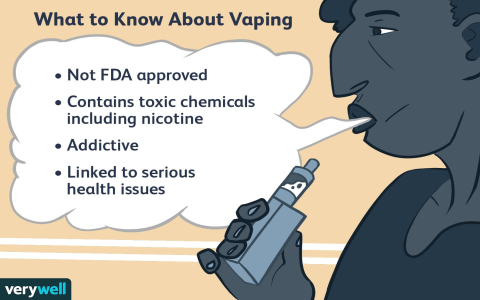Understanding Electronic Cigarette Use
Definition and Mechanism:
Electronic cigarettes, commonly known as e-cigarettes or vapes, are battery-operated devices that heat a liquid (e-liquid or vape juice) to create an aerosol, which is then inhaled by the user. This process is often referred to as “vaping.” E-liquids typically contain nicotine, propylene glycol, vegetable glycerin, flavorings, and other chemicals.

Patterns of Use:
- Smoking Cessation Aid: Some individuals use e-cigarettes as a tool to quit or reduce smoking traditional combustible cigarettes.
- Recreational Use: Others use them for recreational purposes, attracted by flavors, social aspects, or the perceived lower risk compared to smoking.
- Dual Use: A significant portion of users engage in dual use, meaning they use both e-cigarettes and traditional cigarettes.
Key Considerations and Health Aspects:
While often marketed as a safer alternative to conventional smoking, the long-term health effects of e-cigarette use are still under extensive research. Current understanding includes:
- Nicotine Addiction: Most e-cigarettes contain nicotine, a highly addictive substance. Nicotine exposure can harm adolescent brain development, which continues into the early to mid-20s.
- Aerosol Contents: The aerosol produced by e-cigarettes is not merely water vapor. It can contain harmful and potentially harmful substances, including ultrafine particles, heavy metals like nickel, tin, and lead, volatile organic compounds, and cancer-causing chemicals.
- Respiratory and Cardiovascular Effects: Some studies suggest links between e-cigarette use and adverse effects on lung and heart health, though more research is needed to understand the full scope.
- EVALI: E-cigarette, or vaping, product use-associated lung injury (EVALI) is a serious lung condition linked to certain vaping products, particularly those containing THC and Vitamin E acetate.
- Reduced Harm (Relative to Smoking): For adult smokers who completely switch from combustible cigarettes to e-cigarettes, there may be a reduction in exposure to many of the toxins and carcinogens found in cigarette smoke. However, e-cigarettes are not harmless.
Regulatory Landscape:
Regulations regarding the sale, marketing, and use of e-cigarettes vary significantly across different countries and regions. These regulations often address age restrictions, flavor bans, nicotine concentration limits, and advertising practices.
Important Advisory:
Electronic cigarette use is a complex issue with varying motivations and significant health considerations. The scientific community continues to investigate the full impact of these devices. Non-smokers, pregnant women, and young people are strongly advised against using e-cigarettes.










